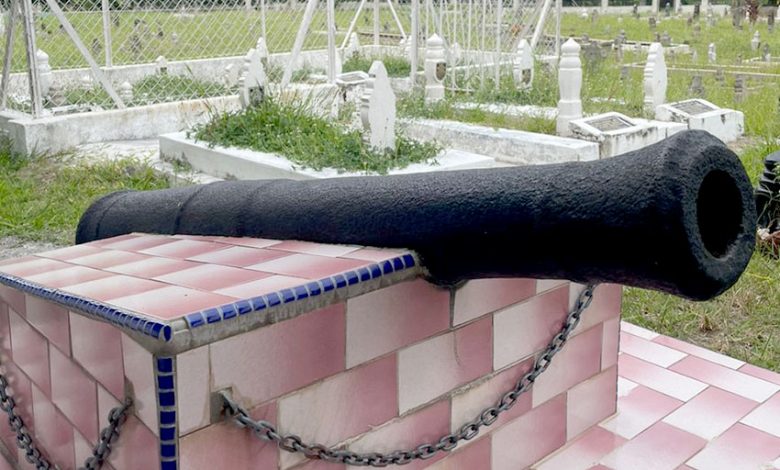

By: Aida Aziz
KUALA KANGSAR: The 400-year-old Meriam Padam Pelita in the Masjid Kota Lama Kanan is a historical artefact that can serve as both a storytelling element and a new product for the Mosque Trail.
It is not just a cannon that witnessed the events of the Perak War in 1876 but is also said to have the power to extinguish the lamps of nearby village residents with its gunfire.
The mosque was rebuilt in 1916 on the site of the old mosque, which was destroyed by fire during the Perak War from 1876 to 1877.
According to the storytelling of the past, it is believed that hundreds of years ago, the cannon would supposedly spontaneously fire if a disaster was about to befall the village, such as a major flood or other calamities.
It is understood that this was meant as a warning for the local inhabitants to be prepared. However, its authenticity cannot be confirmed and remains a mystery to this day.
Recently, the Kuala Kangsar Municipal Council (MPKK) highlighted the existing history here, coinciding with the Visit Perak Year 2024.
According to the Secretary of the Perak Heritage Society, Nor Hisham Zulkiflee, MPKK’s efforts to promote the history of the area are hoped to serve as an example for other local authorities in Perak.
“MPKK also aims to showcase the history of Kota Lama Kanan and try to elevate the area as a heritage-based tourism product,” he said.
Turning to the Perak War, there is also the tomb of Panglima Alang Ishak, a Malay hero who defended against the British forces’ attack on Kota Lama Kanan at that time.
“It is said that Alang Ishak killed several British soldiers during that battle and passed away after World War II. Additionally, there is the tomb of Temenggung Wan Husain, who was the close friend of Sultan Idris Mursyidul Azam Shah.
“Inside the mosque, there is also the Stone Memorial of Sultan Mansur Shah. According to oral tradition, Sultan Mansur Shah mysteriously disappeared during Friday prayers.
“The memorial stone is a tombstone erected by the order of Sultan Idris Murshidul Adzan Shah to commemorate him,” he said during a recent interview.
Further discussing the uniqueness of Meriam Padam Pelita, he mentioned that initially, there were two cannons, but only one remained after the British army disposed of the other.
“When the British arrived in Perak, Kota Lama Kanan was considered a negative area by J.W.W. Birch, mainly due to its villagers being fiercely anti-British and opposing the colonizers,” he added.
“The residents of Kota Lama Kanan used two cannons during the Perak War to resist the British. After the battle of Kota Lama on January 4, 1876, one of the cannons was captured and thrown into the river.
“Only this cannon remains as evidence of the Malay people’s struggle against the colonizers in Kuala Kangsar. According to oral accounts, it acquired its name because when it was fired, it was believed that all the lamps in the village would be extinguished,” he said.






